Ubuntu is one of the newest operating systems ready to make a splash in the mobile business. Behind Android and iOS of course. But you will have to wait until October 2013 to get your hands on an Ubuntu phone.
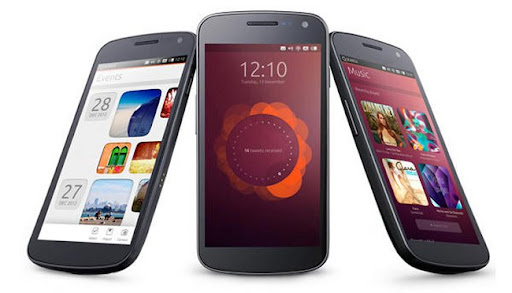
Ubuntu is one of the newest operating systems ready to make a splash in the mobile business. Behind Android and iOS of course. But you will have to wait until October 2013 to get your hands on an Ubuntu phone.

According to a recent report by research firm strategy analytics, Microsoft’s Windows Phone became the third most popular smartphone platform in the US in the fourth quarter of 2012, and apparently took the third place from BlackBerry.
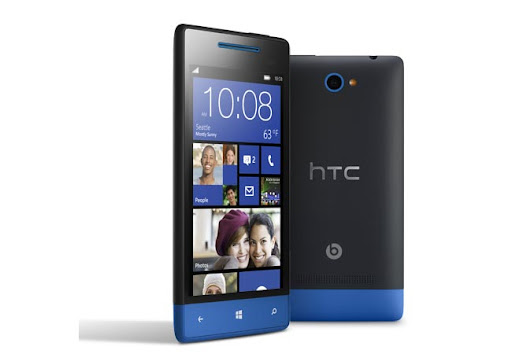
Watch Apple CEO Steve Jobs unveil the latest products at the Worldwide Developers Conference 2008 in San Francisco. See the video-on-demand event right here, exclusively in QuickTime and MPEG-4.
Hier zeige ich euch wie ihr Apple Developer werden k nnt! Wer kein Englisch kann: Developer (Englisch) – Programmierer (Deutsch) Wenn ihr als Apple Developer registriert seid habt ihr Zugriff auf das SDK Packet, mit dem man f r den Mac, das iPhone bzw. iPodTouch, das iPad und den Standart Mac Browser “Safari” programmieren k nnt. Auch auf “geheime” iTunes U Dateien habt ihr Zugriff. Das sind Tutorials von Apple zu dem SDK Packet. Der Standart Account ist kostenlos. Wenn man allerdings Beta’s und Preview’s haben will muss ein den Account zu einem bezahlten machen. Ich Nachhinein geht das auch ganz einfach! Ihr k nnt einfach eure Apple ID (iTunes ID) verwenden oder euch eine neue anlegen. Dann m sst ihr noch angeben f r welche Sachen ihr programmieren wollt und was ihr genau programmieren wollt! Hier k nnt ihr euch registrieren: developer.apple.com Und hier ist das Member Center wo ihr euren Account und noch mehr verwalten k nnt: daw.apple.com
Stylish and Functional Quilted Wallet!
BNB Natural CamoTM * Quilted Construction * Magnetic Snap Closure * 6 Credit Card Slots * Clear-View ID Window * 3 Bill Pockets * Checkbook Pocket * Removable Checkbook Holder with Carbon Protector * Outside Zip Pocket * 7.5″ Wide x 4″ Tall x 1″ Deep
While there were several reasons to jailbreak your iPhone or iPod touch even before the evasi0n jailbreak was released, the launch of the first jailbreak for iPhone 5 and iPod touch 5G adds yet another reason to that list.
FullForce for Phone, a jailbreak tweak developed by famous Cydia developer Ryan Petrich forces apps that haven’t been updated for iPhone 5′s taller display to show in fullscreen mode.
Even though Apple launched the iPhone 5 and the iPod touch 5G in September, there are a number of apps like Google Translate that haven’t been updated for iPhone 5 and iPod touch 5G’s taller 4-inch screen.
If you find the black bars at the bottom and top of the app annoying then install FullForce for Phone. After installing FullForce for Phone, it will prompt you if you want to launch the app (that doesn’t support the taller 4-inch display) in fullscreen mode on the iPhone 5 or iPod touch 5G.

If you tap on the Apply button, it forces the app to launch in fullscreen mode. As you can see below, the Google Translate app doesn’t really look stretched and except for a slight flickr when you launch the app, it feels as if the app came with native iPhone 5 support.

You can also enable or disable the fullscreen mode for an app via the Settings app (Settings -> FullForce).

FullForce for phone is available in Cydia for $0.99 and is compatible with iOS 6.x.
There is a free jailbreak app called ScreenExtender that claims to offer the same functionality, however we were able to get to get it to work and seemed quite buggy.
Let me know what you think of FullForce for Phone in the comments below.
[ See post to watch video ]
Microsoft is introducing its second-ever personal computer. As with the first, it’s a multi-touch 10.6-inch tablet that has some of the attributes of a laptop, such as a USB port and snap-on keyboards. But unlike the first, this new tablet is capable of running full-featured Windows 8, though at a price — in dollars, bulk and battery life.
Both machines are called Surface and at first glance, they look similar. But there are big differences. The original Surface, launched in October, uses a limited version of Windows 8 called RT and runs on the type of processor common in rival tablets and smartphones. As a result, while it can fully handle Windows 8’s new Start Screen tabletlike interface and apps, it can only run four standard Windows desktop programs — Microsoft’s Word, Excel, PowerPoint and OneNote. You can’t install other desktop software.
The new Surface, called Surface Windows 8 Pro, is powered by an Intel processor typically found on laptops and uses the high-end Pro version of Windows 8. So it can run a vast array of standard Windows 7 desktop software. That means you could theoretically use the new tablet as a full replacement for a Windows laptop — if you used one of Microsoft’s thin keyboard covers.
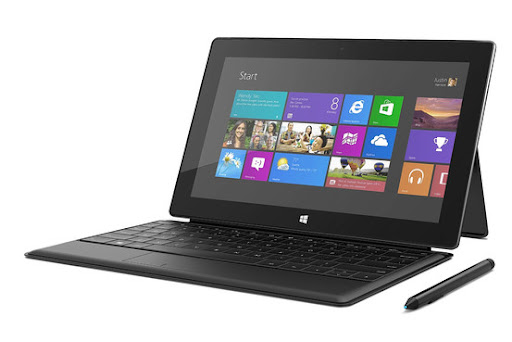
Microsoft views the Pro as a new kind of PC, a sort of hybrid of a tablet and a laptop that spares users the hassle of carrying two devices. It goes on sale Saturday.
The Surface Pro starts at $899 — $400 more than the base model of the biggest, newest iPad or the base Surface RT. To be fair, this entry-level Surface Pro has 64 gigabytes of storage, four times what the base iPad offers. But an iPad with the same 64 GB is $699. A higher-end Surface Pro model with twice the storage costs $999, but an iPad with the same amount of storage is $200 less.
Not only that, but the keyboard covers cost extra — $130 for the one with movable keys, which brings the price to over $1,000.
As with the original Surface, the Pro is solidly built, with the same innovative metal kickstand that keeps it upright on a desk or table. It ran all the software I threw at it — both the new type and the old desktop type — speedily and well. I was able to install and run the full Windows 7 desktop versions of such popular programs as Microsoft Outlook, Google Chrome, Apple iTunes, Adobe Reader and Twitter’s TweetDeck.
The Pro has a much higher screen resolution than the RT. It comes with a handy pen, not included or usable on the RT, that makes navigating on the desktop interface much easier and allows for jotting notes or annotating documents. And it has corporate-friendly security features not found on the RT.
But the Pro has some significant downsides, especially as a tablet.
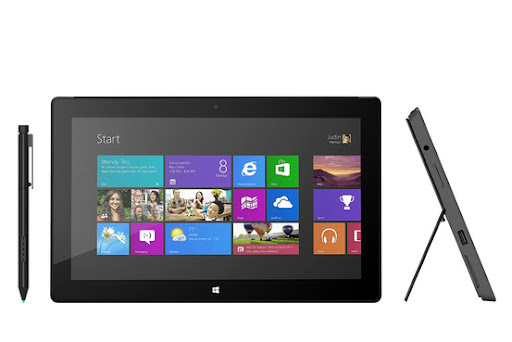
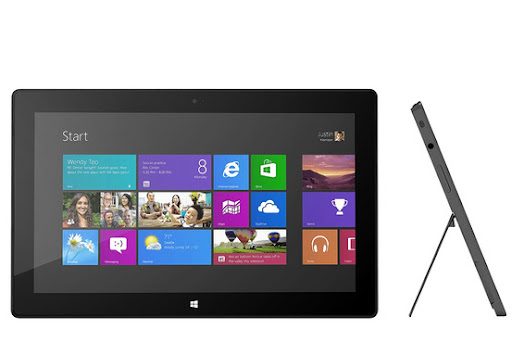
I like the original Surface and see it as a tablet with the extra benefit of some Microsoft Office programs. However, I am less enamored with the Surface Pro. It’s too hefty and costly and power-hungry to best the leading tablet, Apple’s full-size iPad. It is also too difficult to use in your lap. It’s something of a tweener — a compromised tablet and a compromised laptop.
The Pro weighs 2 pounds, which is light for a laptop but anvil-like for a tablet. That is almost 40 percent heavier than the weightiest iPad and over 40 percent thicker. I found this bulk made the Surface Pro even clumsier than the RT is to use on my lap with the keyboard cover, even with the kickstand, which works far better on a desk than on one’s knees.
In my tough battery tests, where I set the screen to 75 percent brightness, turn off power-saving features, leave the Wi-Fi on and play locally stored videos until the machine dies, the Surface Pro did pathetically. It lasted just under four hours between charges — less than half the stamina of the iPad on the same test and three hours less than the Surface RT. In normal use, you might stretch that to five or 5 hours, still poor for a tablet.
Also, as on the RT model, the Windows 8 system files take up a huge chunk of available storage. Of the 64GB of solid-state storage on the entry-level $899 model, only 30GB of that is free for the user, according to Microsoft. On the $999 model, 90GB of the 128GB total is available for the user. Microsoft notes you can add more storage via a flash memory slot.
And unlike the RT, the Pro doesn’t come out of the box with Microsoft Office. That costs extra, just as on most laptops. Unlike the iPad and some Android tablets, neither Surface can be ordered with built-in cellular connectivity, though the Pro can accept extra-cost plug-in cellular modems and, like competing tablets, it can be wirelessly tethered to a cellphone or stand-alone cellular modem.
When used on a desk, table, or airplane seat tray, with the kickstand holding the screen upright and the keyboard cover with movable keys, the Pro is a serviceable laptop, especially since, unlike on an iPad or Android tablet, you can use full-fledged PC programs.
But just as the Pro is compromised as a tablet, it’s compromised as a laptop. You get fewer ports and less storage than on many laptops and a keyboard that can’t compare with those on many laptops.
Some users may not mind the price or bulk of the Surface Pro if it frees them from carrying a tablet for some uses and a laptop for others. But like many products that try to be two things at once, the new Surface Windows 8 Pro does neither as well as those designed for one function.
Find all of Walt Mossberg’s columns and videos at the All Things Digital website, walt.allthingsd.com. Email him at mossberg@wsj.com.
According to an Edge report, the rumored next Xbox will have a game registration system that will prevent the 50GB Blu-ray titles from being resold on the secondary market. The Edge writes:
I am at once skeptical that this is true – it sounds wildly far-fetched to me, even given the horrible decisions made by CE makers in the past – but it also points to a focus on a networked console with loads of storage space more akin to a Steam box than an optical disk player.
My problem with this rumor is that it makes no economic sense for Microsoft. It immediately alienates buyers, game resellers, and even game rental outfits. While there are instances where you must license a game in order to play online, always-on DRM that negates the value of optical media sounds ridiculous and has been proven again and again to be unworkable.
This story could have come from a grumpy developer who used a feature made available by Microsoft for next-gen console developers but it sounds less like a possibility than an alternative, terrible future.
And yet… if you had told the 2001 version of myself that in a little over a decade I’d download all of my music and never buy a paper book again I’d have laughed you out of the Internet cafe. It makes perfect sense for Microsoft to focus its efforts on downloadable gaming. Optical media is an obvious attack vector for console pirates and although the DRM will be hacked in the end, this gives Microsoft a head start against piracy for newer games. I can definitely see a day when I will no longer want or need a stack of game disc cases near my television set – but I’m loath to believe Microsoft (or at least its gaming division) would do something so ham-handed.
We are entering a fascinating stage in gaming. With consoles like Ouya and the aforementioned Steam Box, manufacturers are slowly training consumers to accept the possibility of a console without physical media. While we, in our mental models, find the concept to be abhorrent, I would say that the future will bring an Xbox without a disk slot at all, thereby rendering the thought of used game sales moot. This, I’d wager, keeps GameStop executives up all night in a cold sweat and, in turn, upsets the kid in us who still wants to borrow his buddy’s copy of Demon’s Souls.
Dropbox is unveiling a brand new API for developers today that should give mobile app makers an excellent new tool to work with. The Dropbox Sync API allows apps for iOS and Android to treat files stored on a user’s Dropbox account as if they were local, managing syncing, caching, offline access and tracking changes easily so that developers only have to worry about building an app, and not the storage and management of the files users create with said software.
I spoke to Dropbox Product Manager Sean Lynch about the new API and what it can offer developers. Essentially, Lynch said this is yet another attempt by Dropbox to simplify the lives of developers when it comes to creating apps that can work seamlessly across platforms with remotely stored files, just like the Dropbox Chooser the company unveiled back in November 2012.
“Dropbox’s mission is really to let users access their data wherever they are, and that’s not necessarily geographically speaking,” he said. “Whatever device, whatever platform, whether their computer at home, their smartphone or their tablet, iOS or Android, it doesn’t matter; what we want users to be able to expect is whatever device they plug into, they can access their files on Dropbox when they get there.”
That means that helping developers integrated Dropbox access into their apps is of crucial importance to the company’s overall mission, Lynch explained.
“How do we simplify the story of integrating with Dropbox so that we can get developers everywhere integrating with the service?” has been the main question driving new product development on the API side, Lynch said. “The chooser was definitely the first step in that… We released it on a Thursday, and over the Friday and over the weekend we saw developers go home and paste a couple of lines of JavaScript, integrate the Chooser, and launch the following Monday with Dropbox integration.”
The Sync API essentially simplifies the process of integrating Dropbox storage into apps. Using the previous API, as a developer you’d have to download the file, re-try it if it fails, store it somewhere and set up that location, and then also handle re-uploads. Plus, if a user came offline, you’d also have to figure out a way to track the changes and re-upload them when a mobile network connection is available once again.
Now, the Sync API takes care of all of that for developers, handling inconsistent network connections, offline caching, automatic uploading and offline storage all in one. In a release about the news, Squarespace Note developer Chris Cox said the new Sync API cuts the amount of code it takes to integrate Dropbox into his app in half.
Lynch says that Dropbox is excited about what developers will do with the Sync API, beyond the more obvious use cases of making sure that documents edited on mobile devices remain up-to-date and accessible from other platforms. We could very well see some uses similar to how devs have employed the iCloud syncing API from Apple, but with content saved on a user’s own Dropbox account and therefore accessible not just to iOS and Mac devices, but to virtually any computing platform.
Nokia recently announced that the Windows Phone 7.8 software update would be rolled out shortly to a number of their Lumia smartphones, one of those devices listed was the Nokia Lumia 710.
Now it would appear that not all versions of the Nokia Lumia 710 will be getting the Windows Phone 7.8 software update, as T-Mobile have announced that the Lumia 710 on their network will not be updated to Windows Phone 7.8 you can see their statement below.

Apple has had trouble in the past with some of its trademarks relating to its iOS devices, previously with the iPad trademark in China, and now it would appear that Apple could face similar problems with the iPhone trademark in Brazil.
According to a recent report by Reuters, the iPhone trademark in Brazil is owned by a company called Gradiente Electronica SA, the trademark was registered by the company back in 2000, which is seven years before apple launched the first iPhone.

When Instagram announced its updated Terms of Service and Privacy Policy back in December, the Internet went into a tizzy in large measure because people didn't really understand what was going on. Now, there's a watchdog service that tracks the changes of many of the most popular online services so that we're armed with real evidence when we freak out.
The online legal documents resource Docracy has a Terms of Service Tracker that currently monitors the fine print on 951 websites and has 1070 documents on file—it's been monitoring websites since January 16th. When the documents change, the Tracker highlights the changes in a relatively easy-to-view layout that shows what has been axed and what has been added in red and green. Most of the changes are relatively trivial, but amongst all the non-issues the site will document, the truly significant ones will be easier to pinpoint than ever. [Docracy via The Verge]
The lives of British soldiers in the Brigade Reconnaissance Force just got a little safer. Rather than having to undertake the dangerous task of checking for ambushes, investigating potential enemy positions themselves ("Go see if there are a bunch of guys with guns in that house"), or just sticking their head around the corner, they can now send this fist-sized spy 'copters to scout for danger ahead instead.
Dubbed the Black Hornet Nano Unmanned Aircraft System by its designer, Prox Dynamics of Norway, this micro-UAV measures 4 inches long and 1 inch tall with a 4-inch rotor span. It weighs just 16 grams, flies nearly silently, and is colored to match and blend in with the grey mud buildings of Afghan villages. The Black Hornet's payload consists of a single tiny camera that delivers both full motion video and still images back to the recon soldier's hand-held terminal up to 1000 meters away. And while it may look like a child's toy, the Black Hornet has been ruggedized to handle the harsh, hot, and windy environments in which it operates.
It's powered by a small battery pack, which imparts a top speed of 10 m/s and maximum flight time of about 25 minutes. That's plenty of time to sneak into enemy territory, capture some images, and return to base. In addition to operating under the direct control of a pilot, the Black Hornet can also be deployed autonomously using its on-board GPS receiver.
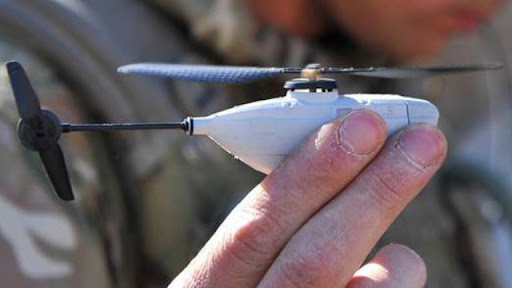
Black Hornet is a game-changing piece of kit. Previously we would have sent soldiers forward to see if there were any enemy fighters hiding inside a set of buildings. Now we are deploying Black Hornet to look inside compounds and to clear a route through enemy-held spaces.It has worked very well and the pictures it delivers back to the monitor are really clear. And Black Hornet is so small and quiet that the locals can't see or hear it.
Sergeant Christopher Petherbridge, of the Brigade Reconnaissance Force in Afghanistan, added that the "Black Hornet is definitely adding value, especially considering the light weight nature of it. We used it to look for insurgent firing points and check out exposed areas of the ground before crossing which is a real asset. It is very easy to operate and offers amazing capability to the guys on the ground."
They've been so popular with troops that the UK Ministry of Defense has already placed a 20 million ($31.3 million) order for 160 units to complement the 300 or so other UAVs it currently operates in the region.
[UAS Vision 1, 2 - Prox Dynamics - BBC - MoD - Wikipedia - Image: MoD]

iH8sn0w has released Sn0wbreeze v2.9.8, which supports untethered jailbreak for iOS 6.x using the evasi0n untether.
Sn0wbreeze v2.9.8 will allow Windows users to jailbreak their older iOS devices such as iPhone 4, iPhone 3GS and iPod touch 4G on iOS 6.1 to iOS 6.0.
Here’s what new in Sn0wbreeze v2.9.8:
Sn0wbreeze allows users to create custom firmware file that is pre-jailbroken, which can then be used to upgrade their iPhone, iPad or iPod Touch to iOS 6.0.1 and iOS 6.0. In case of iPhone, Sn0wbreeze also preserves the baseband from getting upgraded so that it can be unlocked using Ultrasn0w.
iH8sn0w has reiterated that Sn0wbreeze won't support A5, A5x, A6 and A6X powered devices like the iPhone 5 , iPhone 4S, iPad 4, iPad 3, iPad 2, iPad mini and iPod touch 5g.
As stated many times in the past, sn0wbreeze cannot be updated to work on A5(X)/A6(X) devices until a low level exploit in DFU or iBoot is found and made public.
You can download the latest version Sn0wbreeze, which is available only for Windows users from the download page.
As always, let us know how it goes in the comments.
Via: iH8sn0w’s blog
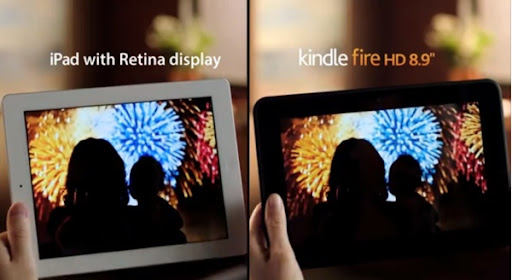
Last year, soon after the iPad mini was launched, Amazon went on the offensive and ran a Kindle Fire ad that openly mocked it. They wanted wanted to show that the Kindle fire was a better device for less money.
But they ended up pulling the controversial anti-iPad mini ad as it incorrectly mentioned it didn’t have a stereo speaker.
That embarrassing episode hasn’t stopped Amazon from running this new Kindle Fire ad comparing the new 8.9-inch Kindle Fire HD with the 4th generation iPad with Retina Display. The ad notes that both the devices offer “stunning HD,” but “you may not be able to tell the difference,” but your wallet will definitely can as the Kindle Fire is available for only $299 whereas iPad 4 is available for $499.
Is screen the only differentiator? I don’t think so.
HT: 9to5Mac

The popular online bookmarking and scrapbooking service Pinterest is reportedly in talks with investors to raise a new round of funding. According to The Wall Street Journal, sources have told it that the potential round has the company valued at between $2 billion and $2.5 billion.
Pinterest has raised $138 million from several notable investors including Andreessen Horowitz, FirstMark Capital, Rakuten, Ron Conway, and Max Levchin. In its last round of funding, it was valued at $1.5 billion. Most recently, SV Angel took part in a $30 million secondary sale investment in Pinterest.
With this valuation, Pinterest is a part of a growing group of technology companies that have extraordinarily high valuations, including Evernote, Airbnb, SurveyMonkey, and Spotify.
comScore has reported that Pinterest has more than 28 million users in December 2012, up from 7.5 million a year ago. What has been causing this huge spike in users? TNW’s Brad McCarty reported that Pinterest’s rapid rise to popularity was due to its appealing nature towards the female audience.
We’ve reached out to Pinterest for comment and will update this if we hear back.
Photo credit: Alex Wong/Getty Images
Lawyers accuse NYPD of creating climate of fear and call for independent monitor to oversee counter-terrorism efforts
The New York police department's surveillance of the city's Muslim community violates longstanding rules drawn up to prevent spying and harassment of political activists in the 1960s and 70s, according to a legal challenge filed on Monday.
Civil rights lawyers say such "widespread and intense" surveillance has created a climate of fear, and stigma among Muslims living in New York. They are now seeking a court injunction against the NYPD's ability to instigate investigations into Muslims without evidence of crimes and for a judge to appoint an independent monitor to oversee its counter-terrorism efforts.
Lawyers describe NYPD surveillance of Muslims - first revealed by an Associated Press investigation - as an "all-encompassing dragnet" for intelligence, based on the false assumption that "conservative Muslim beliefs and participation in Muslim organisations are themselves bases for investigation."
They cite a series of AP reports about a small counter-terrorism unit within the investigations department, known as the Demographics Unit, later the Zone Assessment Unit, dedicated to infiltrating Muslims in Greater New York. The lawyers said NYPD officers used intrusive methods to routinely monitor restaurants, bookstores and mosques, and created dossiers of innocent conversations without any evidence of criminal activity.
The NYPD has also sent paid infiltrators into mosques, student associations and beyond to take photos, write down license plate numbers and keep notes on people for no reason other than their faith.
"Investigations of any community that are not based upon indications of crime create fear, and erode the confidence of a community in the power of a legal system to protect it," said Paul Chevigny, a professor of law at New York University and one of five attorneys on the case.
"We brought this motion because even in the face of the startling evidence in the press reports, Commissioner Kelly and Mayor Bloomberg have declared the NYPD will continue its intrusive secret surveillance program targeting completely innocent activities in Muslim communities, notwithstanding the prohibitions in the Handschu guidelines the NYPD is obliged to follow."
The Handschu guidelines, named after Barbara Handschu, the plaintiff in a lawsuit over similar widespread harassment of anti-war protesters by the police's so-called Red Squad in the 1960s, were imposed as part of a landmark settlement in 1985. The case was settled with the imposition of the Handschu guidelines, which prohibited investigations of political and religious organizations unless there was "specific information" that the group was linked to past or present crime.
Shamiur Rahman, a former NYPD infiltrator, was paid as much as $1,500 a month to spy on the Muslim community. In a declaration filed as part of the motion, Rahman describes how he took photos of worshippers at mosques, took down cell phone numbers of those who had signed up for Islamic education classes, and provided images of Muslim students at John Jay College.
"My NYPD boss Steve told me that the NYPD did not think the John Jay Muslim Student Association was doing anything wrong, [and that] they just wanted to make sure," Rahman said. "The members of the MSA were religious Muslims, and according to Steve, the NYPD considers being a religious Muslim a terrorism indicator."
Lawyers involved in the long-running battle Handschu case successfully opposed a policy introduced by the NYPD after the 2004 Republican convention to video and conduct surveillance operations in the absence of unlawful activity.
When contacted by the Guardian, the NYPD did not immediately respond.
The NYPD and Michael Bloomberg have said the department follows the Handschu guidelines, and did not break any laws over the course of its surveillance of Muslim communities.
Supporters said the Demographics Unit was central to keeping the city safe, though a senior NYPD official testified last year that the unit never generated any leads or triggered a terrorism investigation, according to the Associated Press.
NYPD commissioner Ray Kelly has said the department has plenty of oversight, including five district attorneys, a committee that investigates police corruption and the NYPD's own internal affairs office.
Samsung are expected to announce a number of new devices at Mobile World Congress later this month, and now according to a recent report Samsung may intend to launch a smartphone with dual displays, the Samsung Galaxy Q.
According to the guys over at Mobile Geeks, the Samsung Galaxy Q will feature two 5.3 inch full HD display with a resolution of 1920 x 1080 pixels each, and the displays will apparently be AMOLED, possibly Samsung’s new flexible display technology.
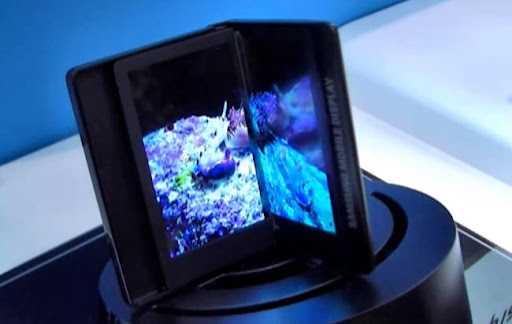
Samsung announced an updated version of their Galaxy S2 smartphone last month, the Samsung Galaxy S2 plus, and now the device has gone on sale in Finland and it retails for 378 Euros.
The Samsung Galaxy S2 Plus features a 4.3 inch Super AMOLED display with a resolution of 480 x 800 pixels, it also comes with Android 4.1.2 Jelly Bean and is powered by a dual core 1.2GHz processor.
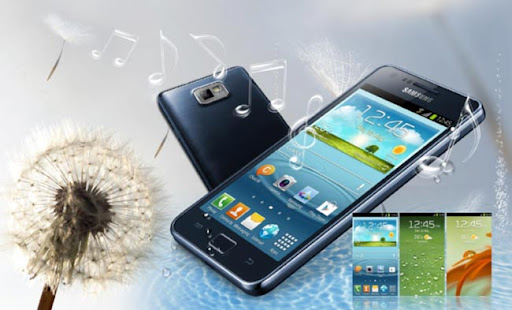
The U.S. Navy just released this stunning photo of sailors participating in a flight deck scrubbing exercise aboard the USS Carl Vinson (CVN 70), a Nimitz-class supercarrier that is currently undergoing sea trials. But what the hell are they scrubbing? Is the carrier caught in a blizzard?
No, that is not snow. In this exercise, sailors are cleaning up a metric assload of what's called AFFF foam, a fire suppressing foam commonly used aboard aircraft carriers. The foam smothers the flames by cutting off the oxygen supply. Handy stuff to have on a deck full of missile-packing planes—when one of those catches fire, the only feasible way to extinguish it is to push it off the deck and into the ocean. This is not preferred, so containing fires is a big deal
The problem with AFFF is that it's slippery as all getout, so it has to be cleaned up before the deck can be used to launch or land planes—which is, after all, the whole point of an aircraft carrier. Needless to say, this has to be done quickly, and hence the drill you're seeing in this photo. There are more scrubbing photos on the Carl Vinson Facebook page.
(Photo: Mass Communication Specialist Iain L. Stratton/U.S. Navy)
Special thanks to Giz alum, former US Navy ensign, and generally awesome guy JD Levite for the background info.

I built the lightbox on Saturday. I shot a bunch of very pedestrian things. On Sunday, I started by cleaning the house and waiting for inspiration to strike. As I was putting my wife's coat over a chair in the living room, I knocked over a statue behind the chair. It broke. It was my wife who suggested I shoot it in the light box. I shot the two pieces in the lightbox with both the head and the statue in focus in separate shots.I went on to take and edit more, fine shots, but my wife convinced me to return to the shot of the statue and head with the head in focus. The shot is dark and funny, and my wife should get the credit for it. Lightboxes are not for me. Thanks Honey! 50 mm, f/2.5, 1/320 sec, ISO 100
- Rob Huber
This shot is of an coyote skull I've had for a while. I aged it by soaking it over night in tea and by scrawling on it with pencil, then erasing it. For lighting I used 2 45W, 5500 K soft white bulbs and shot the photo with my tripod-mounted Nikon D70 camera with a 50mm 1:1.8D Nikkor lense at 200 ISO, F13, with a 1/2 second shutter speed with remote shutter release. Please let me know if you have any questions or comments.
- Omar Chapa

My husband built me a light box and still have five minutes to spare to go to our friend's house to watch the game! He'd done his job and left me to do mine. I found the brightest part of our house. I used natural light from a window and a home made reflector to light the light box on all three sides. I tried out all sort of things in the box...from black piggies to whisky flasks but in the end chose a goose's egg which is quite simple but I think effective. Used my Canon T2i and the macro lens.
- Georgina Lawrence

When we moved into our office we installed a white cyc stage for our use and for use by friends and clients. I haven't had much chance to actually use the stage myself and was waiting for a good Shooting Challenge to submit to; this seemed to be the perfect match. 5DMark III. Canon 24-70 f2.8L, ISO 1250, 1/160. f10
- Jon Michael Kondrath

I built my light-box with a 20'x20' moving box and a shower liner. Canon T2i, 55mm, f/2.8
- Diego Jimenez

I shot this Bioshock "Big Daddy" because I love the design and feel of these guys in the Bioshock franchise. They are so huge and heavy looking but also have that kind heart mushed inside that metal body for their "little sisters". This was a great item to add to my collection of toys and action figures, and every time I see it on my desk I smile knowing I have a Big Daddy guarding my computer. Canon 7D, Canon EF 28 - 135mm, ISO 200
- Mike Gallardo

I used a cardboard box, white sheet, and 2 desk lamps, and off camera flash. Canon T3i, Sigma 50mm f1.4 EX DG HSM. Shot at f/4, 1/60, ISO 400.
- Michael Standridge
To be honest I came home late Friday night to see my girlfriend had constructed her light box during the day, and left it setup before leaving to stay the weekend at her mothers. Incidentally she also took our camera, so these were shot with my Evo phone's camera. I thought the images looked decent though so wanted to submit!
- Preston Broussard

I'm a huge comic book fan and have several Spider-man action figures around house. Including this bobble-head Spidey that I got from my girlfriend. I thought it might look neat to pose him under some decent light with the lightbox. I had to take a couple of shots with the same camera settings just to make sure his head wasn't moving during the shots. One slight table bump and I'd have to wait and start all over again. Canon 550d, Sigma 50mm 1.4, ISO 100. F 2.8, 1/40
- David Rusho
After hearing about this contest from a friend, I went down to my dorm room's recycling room and liberated a cardboard box. Construction of the box was a group effort, and the rubber band ball was on a friends desk. Shot with a Sony Alpha 33 (SLT-A33) using a 50mm F1.8 lens (DT 50mm F1.8 SAM)
ISO 400 1/160 second at /1.8 50mm
- Kyle Trusler

(Click the photo to see it without a crop.)
Granted, not everyone used a homemade rig this week (which was fine—that was totally allowed in the rules). But I'm perpetually surprised by the quality of jury rigged photo props. Chances are, if there's a professional effect you've always wanted to try but thought you couldn't afford, there's somebody who has already built the thing from bent coat hangers and a few bargain bin light bulbs. See the full gallery below and the big shots on flickr.
View the gallery
Bloomberg Contributing Editor Paul Kedrosky discusses the Apple iMac shipping delays on Bloomberg Television’s “Bloomberg West.”
Paul Kedrosky: This [iMac situation] is, at best puzzling, and, at worst, a condemnation of what’s happening inside the company because it speaks you both managing the supply chain, sure, but also just the straight up manufacturablity of their products. If you’re unable to manufacture products that you’re speccing, at the volumes that you anticipate selling, that suggests that your selling products that you haven’t gone though the right manufacturing validation for – and that goes directly to Tim Cook’s feet.
I think what’s happening is that the company is losing sight of manufacturability when builds product and you can say what;s probably happening is that Jony Ives [sic] is increasingly, you know, running the show; we’re getting some lovely, aesthetically-designed products, but there’s no tension on the other side saying, “Hey, wait a minute, Jony, this product; we’re going to have problems here, here, here, and here in terms of getting enough units of flat panels or memory or whatever else and so, as a result, the manufacture of these products is probably going to be poor and we’re going to have problems satisfying our customers which means that, they’re not just going to wait around for us, they’re going to go somewhere else.
MacDailyNews Take: Kedrosky doesn’t understand Mac users, that much is sure.
Paul Kedrosky: What I think you’re really seeing under the hood here, is sort of the , you know, usurping a great deal of the executive control at Apple by the design staff led by Jony Ives [sic] and, as a result, what Apple used to be good at, which was this tension between design and manufacturability, with manufacturability led by Cook, that’s gone. Now it’s: “Let’s build pretty stuff and maybe one day we can figure out how to ship it in volume” and it’s shareholders who are finding out the consequences of that.
Direct link to video here.
MacDailyNews Take: Does Kedrosky offer proof to back up his claims? Nope. Until we see some actual proof, this remains just a little fiction spun entirely in Kedrosky’s head. Apple screwed up with the iMac supply. Everyone knows it. Nobody knows why. This is because Apple insists on sitting there mum and, as they will hopefully someday finally figure out, in the absence of information, information will be created to fill the void.
Kedrosky is offering his explanation. He doesn’t understand the level of Mac users’ loyalty and he confuses iPhone users with Mac users, to boot. He doesn’t even know Jony Ive’s name; it’s “Ive,” not “Ives.” (Burl Ives, Jony Ive, m’kay, Paul?) Plus Kedrosky offers no proof that iPhone users went elsewhere during initial product shortages. In fact, all of the verifiable proof we have says otherwise:
Apple tops Samsung, becomes largest mobile phone vendor in U.S. in Q4 2012 – February 1, 2013
Almost half of Verizon's record iPhone sales were Apple iPhone 5 units – January 22, 2013
Apple iPhone continues lead with 51.2% U.S. market share as Android users increasingly switch to iPhone – January 22, 2013
Apple iPhone takes 53.3% of U.S. smartphone sales, Android falls to 41.9% – January 7, 2013In the end, however, Kedrosky cannot be blamed for weaving whatever fairy tale he wants to weave; it’s Apple’s institutionalized cone of silence that’s to blame for creating the information vacuum in the first place. In other words, just tell us that the friction-stir welding process (or whatever) ran into an unforeseen snag and that you’re working on the issue and hope to have iMacs in customers’ hands ASAP, Apple. It’s okay to simply admit and explain the issues to customers, Apple. We’ll understand. Really, we will.
With such a simple statement, none of this soap opera bovine excrement would be floating around out there.
Related article:
Paul Kedrosky on what's gone wrong at Apple: Power balance has been altered – February 2, 2013
“The Jony Ive era is upon us,” Christina Bonnington reports for Wired.
“It has become increasingly clear since the ouster of Scott Forstall as Apple's iOS chief, and the elevation of design wunderkind Ive to oversee both product industrial and user experience, that Apple is planning an iOS and OS X interface overhaul,” Bonnington reports. “‘I don't think Apple will ever stop refining their OS's and interfaces, and with Jony Ive at the helm we should expect to see improvements,’ Gartner analyst Brian Blau told Wired. While Apple issues yearly updates to its OS, and minor updates at other points during the year, Blau said the ‘timing is anyone's guess.’”
Bonnington reports, “The latest sign that changes are afoot is a job listing seeking senior software engineers for Apple's iLife suite. The posting calls for ‘an enthusiastic Cocoa engineer to help us re-imagine how user interfaces should be built and work.’ That doesn't sound like a simple facelift. That sounds like the ground-up revamping of a core software suite - iLife, included in every new Mac, includes iPhoto, iMovie and GarageBand.”
Read more in the full article here.












































